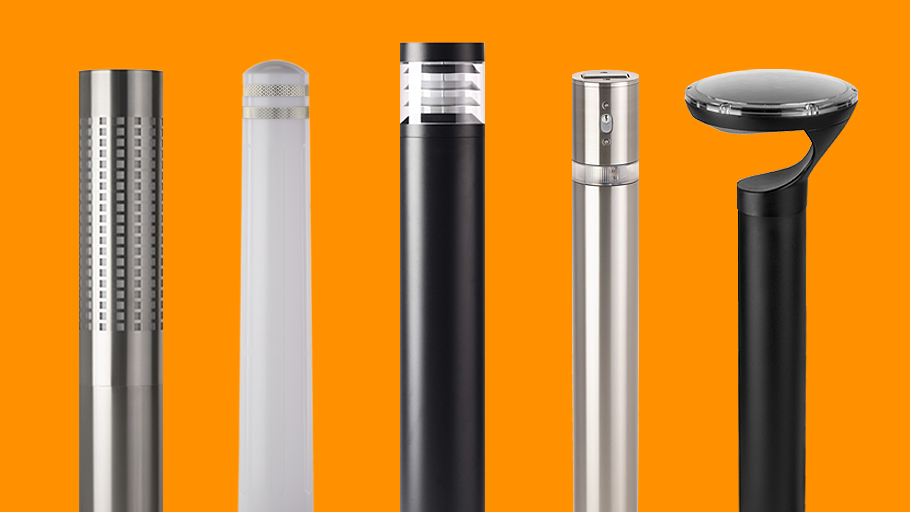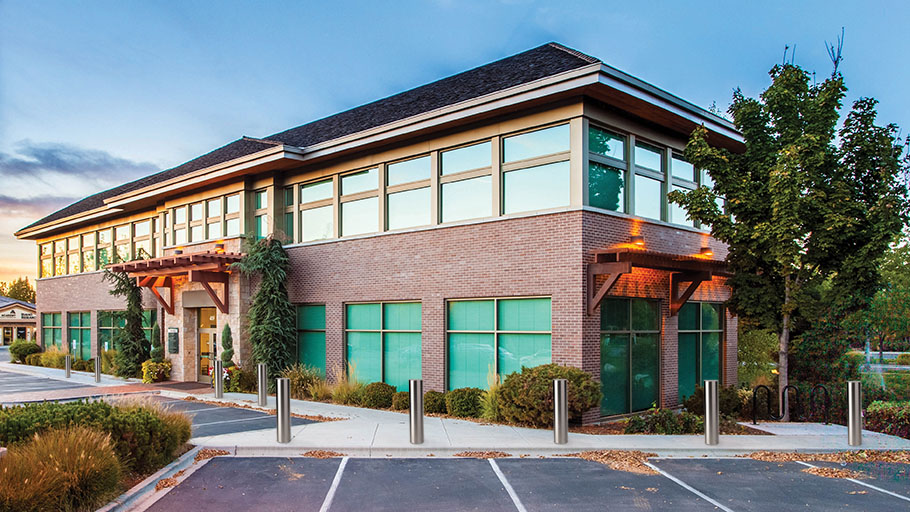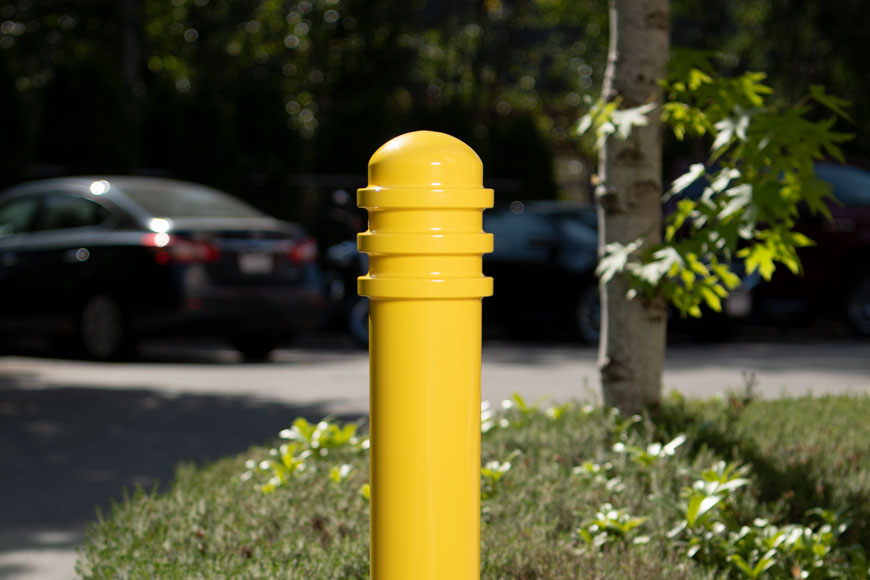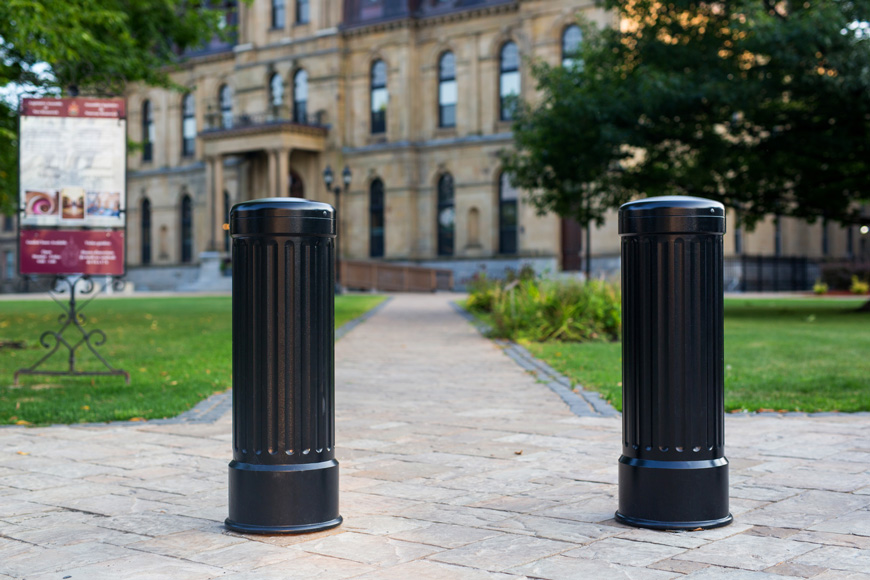A strategy for successful traffic management
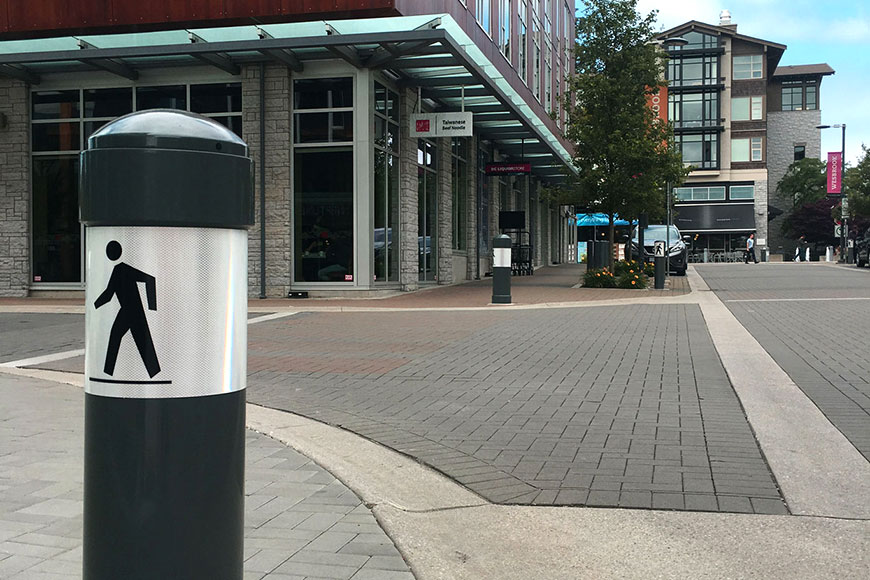
Colleges and universities often function like small towns. University planners oversee construction of many of the same facilities and amenities found in typical cities. Along with learning centers and student living quarters, post-secondary institutions now increasingly include shops, banks, restaurants, pubs, large sports venues, and business offices. Creating campus safety means integrating these into the ebb and tide of students that surge through a busy campus. This can represent an increased strain on institutional infrastructure, as colleges and universities must plan for high levels of both pedestrian and non-motorized traffic, buses, and a larger-than-average proportion of young drivers on the road. These demands make traffic safety on campus both uniquely challenging and of critical importance.
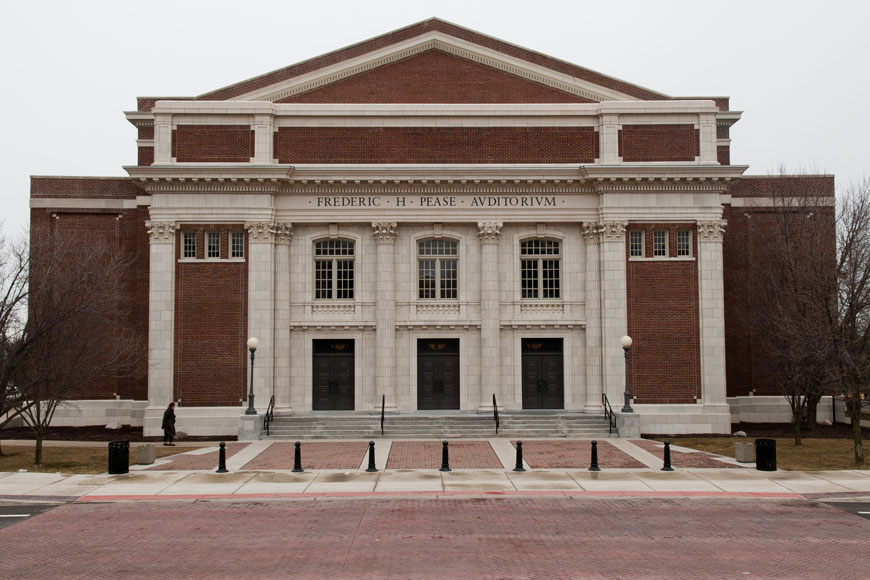
One unobtrusive strategy to allow pedestrian and non-motorized traffic to pass easily, while preventing vehicle incursion into protected areas, is the use of bollards. These bollards can be sourced to complement the architecture. They can even be used to provide other amenities, like bike parking or solar lighting. The addition of a few small bollards can make an oversized impact to the safety and security of a campus.
Bollards defined
Bollards are short posts, usually 36-52″ high. They are used as protective barriers, to give demarcation to an area, or to control the traffic flow of vehicles and pedestrians. Colleges can use them to communicate expectation without cluttering up the landscape with signs or solid barriers.
Because the needs of each campus are unique, there are a variety of bollards available. The type of bollard chosen will be dictated by its intended role in the institution’s architectural design.
Traffic Bollards
Bollards can manage both vehicular and pedestrian traffic. They are an efficient means of communicating the expected route for people, bicycles, cars, and trucks to take.
On pathways and around landscape features
Bollards can be used around gardens, along pathways, or on the edge of lawns to let people know the best places to walk, without preventing access the way a wall or fence would. In icy climates, a line of bollards can delineate a pathway out from the possible slide of snow or ice from the roof. A line of bollards with chains near a blind corner might encourage people to cross at a designated walk. Large institutions often take a great deal of care in selecting outdoor artworks; bollards can be used as a visually unobtrusive way to rope them off. Solar bollards can provide path-level lighting through a dark stretch at night. Bollards are often thought of as a guide for vehicle traffic, but they can be equally effective as a guide to foot traffic.
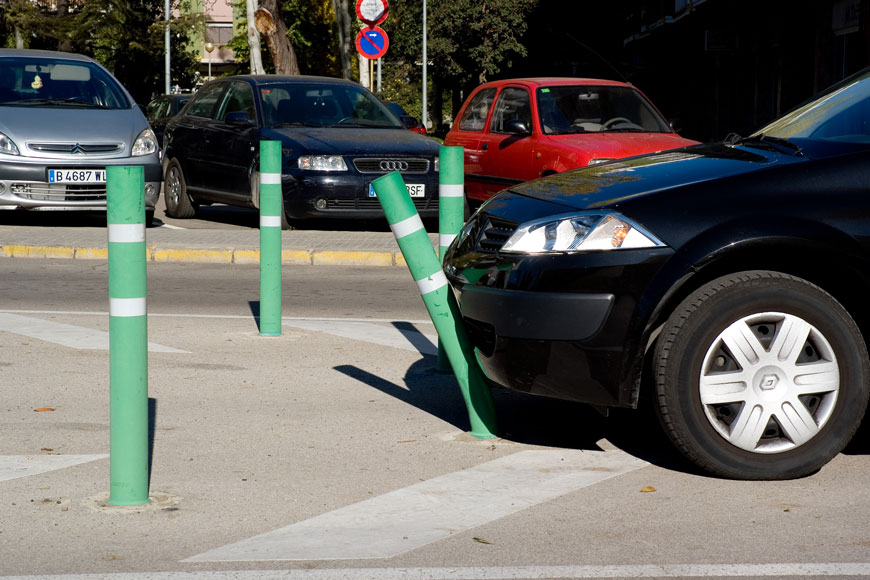
On roadways
Polyurethane flexible bollards can bend up to 90° upon impact to avoid damage to vehicles and the posts themselves. This makes them a good choice for areas where cars may frequently swipe or hit them directly. Although flexible bollards provide no impact resistance, they do act as visual deterrent, discouraging vehicles from taking an incorrect route.
Flexible bollards often are used to keep vehicles in their lane, as in an approach to a toll booth. These bendable bollards also keep bicycles and cars in separate lanes at dangerous curves, demark paths near campus stadiums, and ensure that cars safely navigate in large parking lots. They can also be used as vehicle-safe parking stops for new drivers not yet confident on the length of their car.
A barrier to traffic
Deep-mounted metal bollards are often placed in campus parking lots to protect pedestrian walkways and ticket machines. Drivers, especially newer ones, misjudge turns and cut close to sidewalks. Strong, immovable bollards stand guard to absorb any accidental impact.
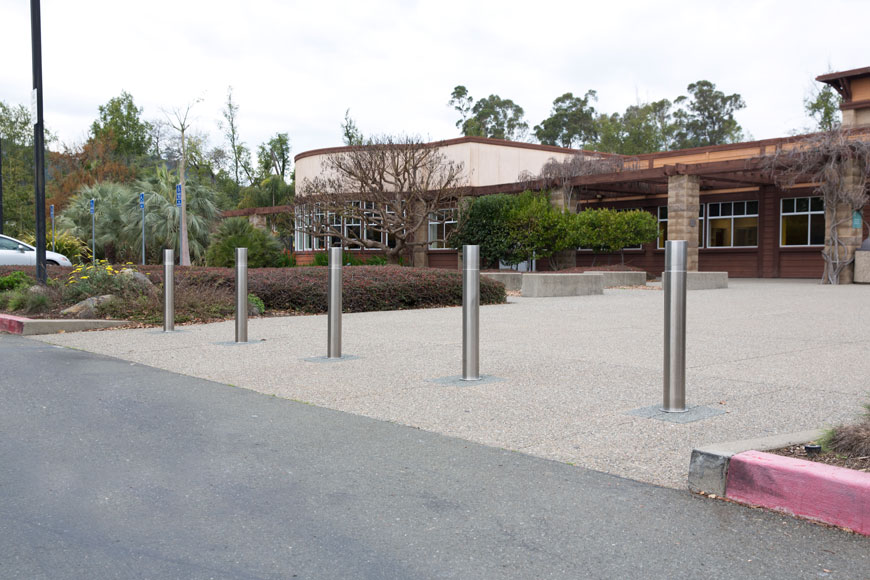
At access points
Campus stadiums and buildings often restrict vehicle access to only emergency or campus vehicles, allowing designated groups to drive where regular traffic cannot. Removable, retractable, and collapsible bollards give maintenance or emergency vehicles the ability to move through an area otherwise restricted to vehicle traffic. Removable bollards can be unlocked and stowed: they are simple to lift but need space to be stored when not in use. Retractable bollards telescope into the ground, which eliminates the need for stowing but does mean that a chamber to hold the bollard must be dug below grade. A collapsible bollard comes with a hinge, allowing it to be folded to the pavement so a vehicle can pass over top; these prevent need for storage or deep digging, but necessary hardware gives the bollard a more technical, less sleek look. On all three, the locking mechanisms can be opened quickly by authorized personnel, but the bollard deters other vehicles from trying to get through uninvited.
Variable access bollards can also be considered for places where only seasonal access is granted. Park areas may be closed in the winter and opened in the spring.
High-impact campus safety bollards
Crash-rated or security options
Bollards do not need to be simply a visual deterrent: impact-ready versions will prevent vehicles from breaching pedestrian areas.
When used in safety applications, steel pipe bollards filled with cement offer higher levels of impact resistance than bolt-down bollards. These security bollards protect pedestrians and buildings from vehicle crash. Their level of stopping power is based on local soil and installation conditions.
Crash-rated bollards are rigorously tested to have a consistent stopping power when installed as instructed. These bollards offer the security of knowing what size and speed vehicle they can stop in a deep angle or head on crash.
Either option is cemented with a deep footing into the ground. Larger-diameter pipe bollards are appropriate for places with fast-moving traffic; smaller diameter ones are often found around utility meters, parking lot meters, drive through windows, and other places with slower average speeds.
The steel of impact-ready bollards is vulnerable to rust. They must be painted, galvanized, or covered to protect them and fit with the environment. Covers are available in many different styles, from high-visibility plastic to decorative cast iron.
A variety of covers and styles
After concrete is poured into a security bollard it can often be finished with a rounded concrete cap. Once the cap is cured in, the whole pipe is often painted, often in bright yellow or another eye-catching color.
For those looking for flexibility and less upkeep, plastic covers are available in a variety of colors. Some are simple cylinders, while others are decorative plastic meant to look like traditional bollard styles are also available. Plastic covers stand up to many dings and scrapes. The color is impregnated throughout the material so that a scratch does not cause discoloration.
Metal covers are more popular for their look and durability. Stainless steel covers provide a modern look that looks sleek and clean. On campuses, the most popular choices are the most traditional. Decorative bollards in cast iron, steel, or aluminum support the legacy look and feel of classical architecture. These pieces, sealed in a protective powder coat, are an investment in both safety and aesthetic that continue to look exceptional over decades.
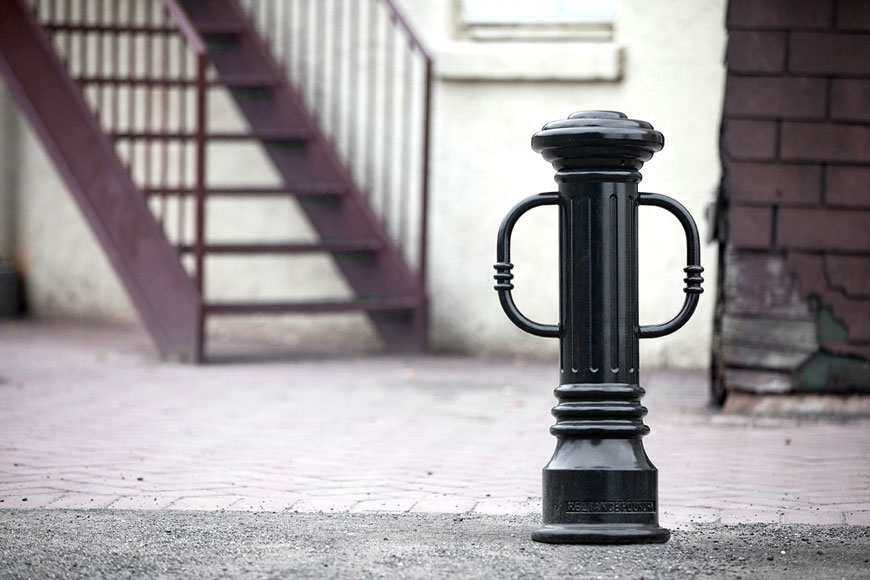
Bike Parking Bollards
Increasing fuel costs, rising tuition fees, and a growing social consciousness have given a boost to the number of bicycles found on campuses. An increase in student biking raises an institution’s need for bicycle parking. In central areas, commercial bike racks might be used, but distributed over the campus bollards perform a dual function: they are both traffic management and bicycle storage. To protect an institution’s landscape, installing bike parking bollards can also help to prevent cyclists from locking their bicycles to trees, signposts, and fences.
Bike parking bollards put a spin on the classic bollard by adding decorative locking arms. Either chains or U-locks attach the bike to the stand through the arms, making it impossible to slide them off. The arms are made from ductile iron, which makes them difficult for would-be bike thieves to cut.
Institutional safety as an ongoing project
Like cities, colleges are aware of the increased risk to pedestrian safety of more densely packed, busy streets, as well as the possibility of vehicles being purposefully used in attack. When looking to make a site security plan more robust, traffic management is high on the list. Often overlooked, bollards are a clear way to communicate an institution’s traffic flow expectations, alongside speed humps, signs, enforcement, and structural traffic calming. There is a bollard available to facilitate the application of every traffic management plan and to match the aesthetic design of every campus.

